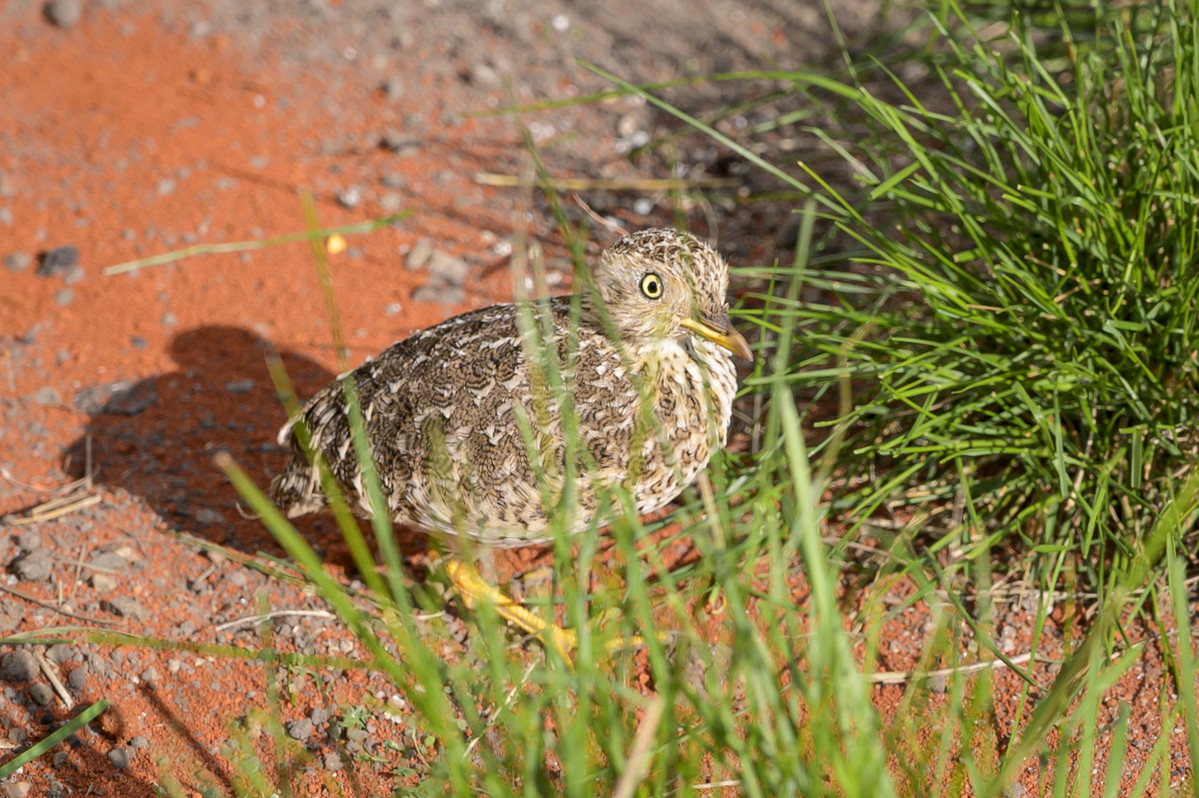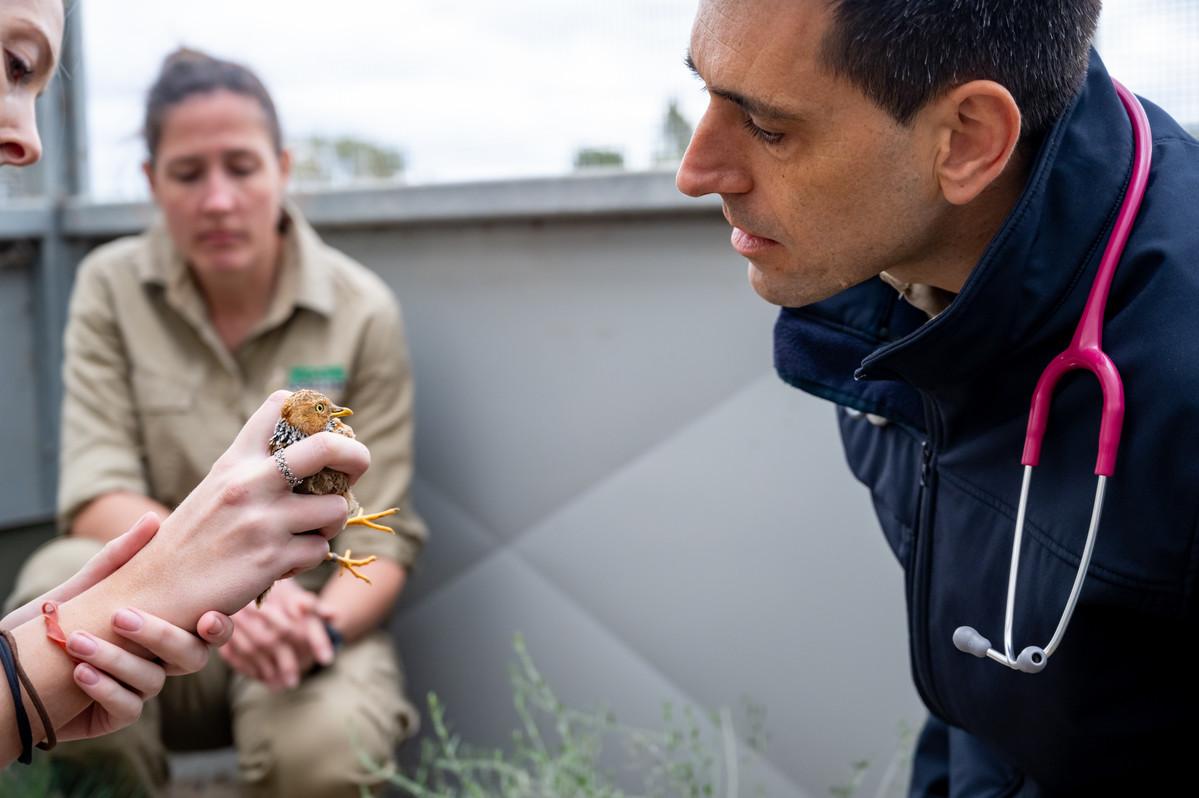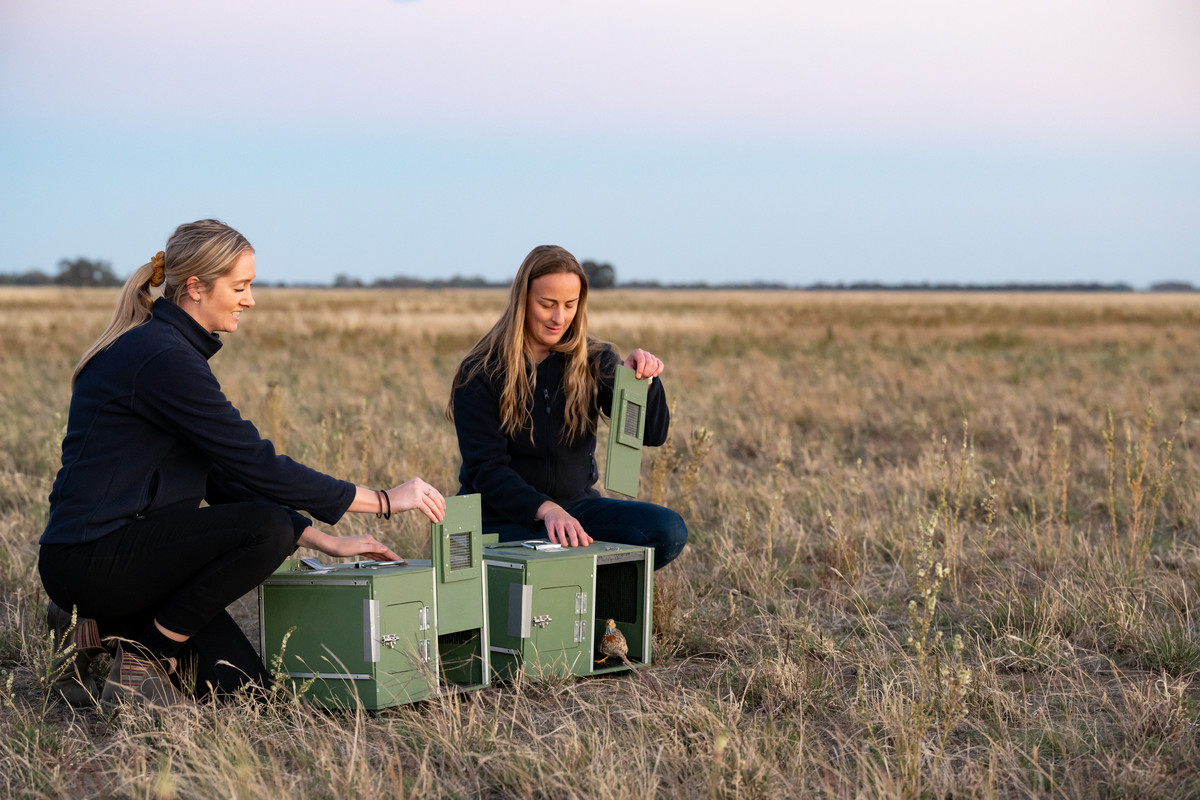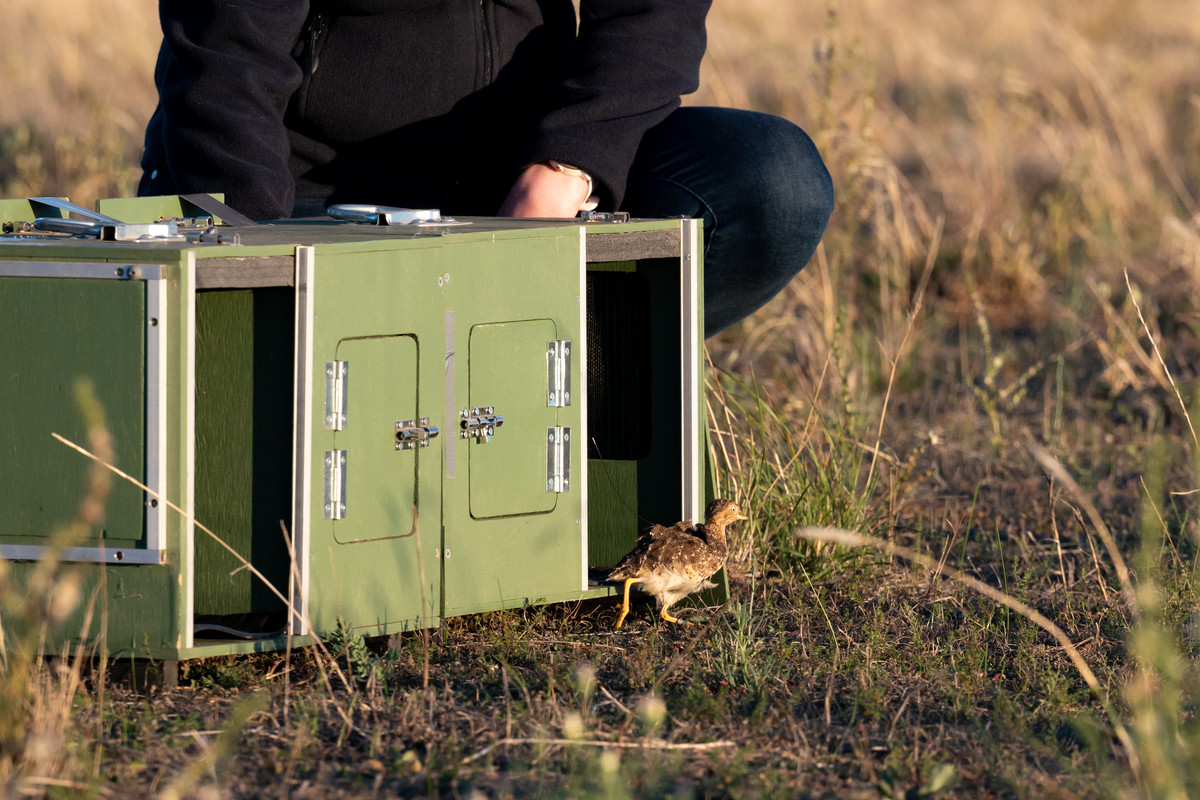Precious Plains-wanderers released into the wild in conservation first
Following years of research, captive breeding and planning, eight of the world’s most critically endangered and genetically distinct birds have been released into the wild for the very first time – embarking on a vital journey to help save the Plains-wanderer species from extinction.

In a collaborative research trial led by Zoos Victoria, Victorian Department of Environment, Land, Water & Planning (DELWP), Parks Victoria, Trust for Nature, Taronga Conservation Society Australia and NSW Department of Planning, Industry and Environment (DPIE), four pairs of tiny, ground-dwelling Plains-wanderers are now roaming on public and privately owned land in Victoria’s Northern Plains, while being closely tracked by a team of conservationists.
Once widespread throughout the grasslands of Queensland, New South Wales, Victoria and South Australia, extensive habitat destruction, impacts from grazing, a lack of understanding about the species and extreme weather events resulted in a dramatic decline (>85%) of the Plains-wanderer population throughout the past 20 years, driving them to the brink of extinction.
The release of captive-bred Plains-wanderers is a major milestone for the National Recovery Plan for the Plains-wanderer established by the Australian Government in 2016. In a multi-state, cross-agency team effort, conservation organisations have established a thriving insurance population of Plains-wanderers via a national captive breeding program. The program aims to replenish wild populations and complement improved habitat management strategies.
Over the past five years, conservationists across Australia have researched and developed specialist skills in Plains-wanderer husbandry. Thirty-two Plains-wanderers were obtained from the wild as foundation birds for the captive breeding program, resulting in the births of 37 healthy and thriving chicks - 20 of those born at Werribee Open Range Zoo.
Werribee Open Range Zoo Threatened Species Keeper Yvette Pauligk said the incredible breeding success has allowed conservationists to take the next major step in the recovery plan - to trial small-scale wild releases.
”The Plains-wanderer breeding program at Werribee Open Range Zoo feels like it has gone from zero to 100 very quickly,” Ms Pauligk said. “We are ecstatic to have had great successes in the program, here and with partners within the region. The Plains-wanderers we have released are a combination of birds born in captivity and wild-caught founder birds who have successfully contributed their genetics to the captive breeding program. It’s truly rewarding to see these animals returned to their natural wild habitat.”

Over the past five years, conservationists across Australia have researched and developed specialist skills in Plains-wanderer husbandry, resulting in the births of 37 healthy and thriving chicks - 20 of those born at Werribee Open Range Zoo.

Ms Pauligk said the research trial’s key measure of success will be to develop a comprehensive Plains-wanderer release monitoring protocol that enables conservationists to collect data on dispersal, breeding and survivorship, and refine monitoring technology, with a goal to facilitate larger scale releases of the species in future.
“As the Plains-wanderers are going back into natural habitat, it’s possible that some may not make it through the journey. However, the hope is that by releasing them into protected and optimal conditions, and with close monitoring and tracking from conservationists, that the Plains-wanderers will be able to thrive, breed and contribute to the restoration of their wild population.”
Chair of the National Recovery Plan for the Plains-wanderer, and NSW Department of Planning, Industry & Environment Senior Threatened Species Officer, David Parker said the species recovery in the wild will be dependent on the delivery of a targeted conservation breeding program and long-term commitment by land managers to maintain the species’ preferred native grassland habitat.
“This trial release is a critical next step in successfully releasing birds into the wild,” Mr Parker said. “Being able to release birds into paddocks of well-managed habitat is a credit to both the organisations involved in the breeding program and the land managers who have made the significant commitment to manage their paddocks for the bird.”
In evolutionary terms, Plains-wanderers are completely unique. They are genetically distinct from any other species on the planet and are the only living members of their evolutionary line, the ‘Pedionomidae’ family. It’s estimated that there are fewer than 1000 remaining in the wild, primarily in two remaining strongholds in Victoria’s Northern Plains and the New South Wales Riverina.
Each Plains-wanderer released in the trial has been fitted with a radio harness transmitter weighing just 1.8 grams, whilst thermal cameras and newly constructed radio tracking towers are also being utilised by conservationists to closely monitor the birds within a range of three kilometres. This release is the first phase of a larger research trial for the species, which will see additional Plains-wanderers venture into the wild over the next three years.

The Plains-wanderer Recovery Team is a voluntary collaboration of government and conservation organisations who are working together to save this important native grassland bird from extinction. This includes Australian Government Department of the Environment and Energy, Bush Heritage, Elanus Consulting, Featherdale Wildlife Park, Government of South Australia, NSW Local Land Services, NSW Department of Planning, Industry and Environment, Northern Plains Conservation Management Network, Parks Victoria, Queensland Government Department of Environment and Science, South Australian Government, Taronga Conservation Society Australia, Trust for Nature, University of Sydney, Victorian Government Department of Environment, Land, Water and Planning, Zoos South Australia and Zoos Victoria.
Zoos Victoria would like to thank and acknowledge funding partners; the Victorian Government, the Geostudies Fund, a sub-fund of the Australian Community Foundation, Judith Landsberg and David Cash, Andy McGillivray and Judy McGillivray, Elizabeth Sarrailhe, Kate Vinot and Blaise Vinot and Sally White.
